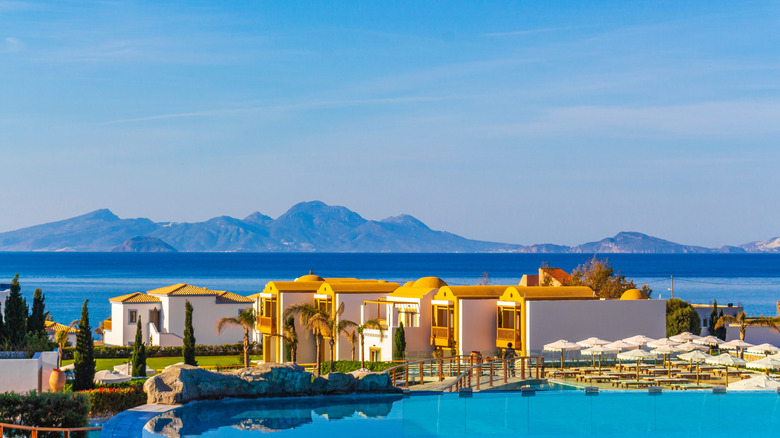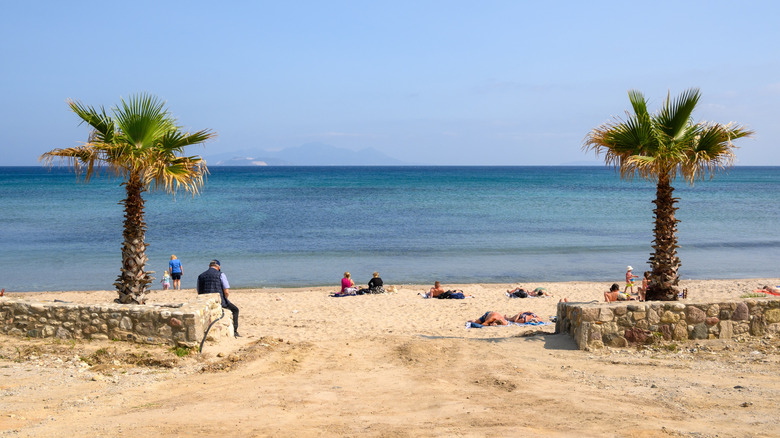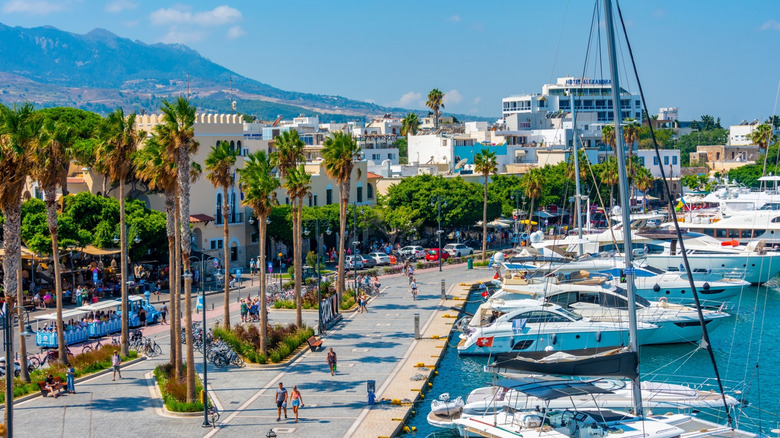Skip Crowded Mykonos For This More Affordable Greek Island With Just As Gorgeous Golden Beaches
Looking for a Greek island getaway to skip the crowds and high prices of popular Mykonos? Kos, a hidden gem in the Aegean Sea, offers the perfect blend of history, nature, and relaxation at lower prices. Established in the 4th century B.C., this southern Greek island enjoys warm temperatures most of the year. Kos is home to crystal-clear waters, pristine beaches, ancient ruins, and medieval landmarks. Whether you prefer the lively atmosphere of popular beaches with water sports or the tranquility of secluded coves, there's a perfect stretch of sand for every traveler.
If you know where to look, you'll find landmarks and must-see spots on the island that are completely free, one of them being the thermes. This is one of the best places to soak in scenic hot springs and let its mineral-rich waters soothe you with no entrance fee. If you can handle temperatures reaching 113 to 122 degrees Fahrenheit, this is the ultimate spot to unwind after a day of swimming, scuba diving, and sightseeing. This is just one out of many examples, though. Whether you're exploring Kos for its rich history, indulging in its culinary delights, or simply soaking up the sun by the sea, this Aegean paradise promises an unforgettable getaway — regardless of how much you have in your pocket.
Must-see spots in Kos town
The first beach we recommend is tucked along the northeast coast of Kos. Paradiso Beach is perfect for a swim in its shallow, warm waters, or to lounge on its golden sand. A few beachside tavernas nearby serve up fresh seafood and cold drinks. Make sure to try "kanelada", a traditional non-alcoholic beverage made of cinnamon, clove, and aromatic herbs. Its location is another reason why we recommend it: Just a short walk away, you will find many of Kos' main historical landmarks, which means that, in just one day, you can have time for relaxation and cultural tourism.
We recommend starting at the 14th-century fortified Neratzia Castle. Just outside the entrance, you'll find the legendary Hippocrates Tree, under which the father of medicine is said to have taught his students. A short stroll leads to the ruins of the ancient Agora, the heart of Kos' commerce during the Hellenistic period, followed by the remnants of the 2nd-century B.C. Altar of Dionysus, son of Zeus and god of wine. Continue your walk to the Roman Odeon, a restored 2nd-century A.D. theater where Roman senators once gathered for public sessions and musical performances. It still hosts cultural events nearly 2,000 years later. If that isn't enough, just cross the street and you'll be at the Western Archaeological Zone, the Archaeological Museum, and Casa Romana, a 3rd-century A.D., 36-room Roman manor adorned with mosaics, frescoes, and statues of goddesses and nymphs.
Livelier beaches in Kos and other attractions
You can also find livelier beaches packed with restaurants, bars, and water sports in Kos. In the north, the strong winds at Mastichari Beach make it the place to be for wind and kitesurfing enthusiasts. In the east, Psalidi Beach, located just over 2 miles away from Kos Town, is perfect for scuba diving. Or maybe jet skiing and paddleboarding are your thing, then try the Tigaki Beach in the north. Its shallow waters also make it a perfect fit for families with small kids. Kids and adults alike will also enjoy the Aquatica Water Park, which provides slides and pools for all levels of adrenaline seekers.
If water sports aren't your thing, take a stroll along Plaka Forest among peacocks in the wild. Also, make sure to go to the Hippocrates Garden Cultural Center and witness a fascinating collection of medicinal plants while attending one of the seminars it offers. Both of these spots offer free admission. Then, head over to the Asclepieion, one of the most significant healing centers in the ancient world and a worship place for Asclepius, god of medicine and son of Apollo.
Finally, unwind at a local tavern, many of which proudly distill their own ouzo, a fragrant anise-based spirit best enjoyed alongside traditional meze or with some local "wine cheese." The island is also famous for its high-quality honey, infused with the flavors of wild thyme and native herbs. Make sure to taste it in loukoumades, a Greek honey-soaked dough fritter served all across the island.
Getting around and where to stay in Kos
Getting to Kos is simple, with one-hour flights from Athens and major European cities like London, Amsterdam, and Berlin. Also, Kos is actually closer to Turkey than to mainland Greece, so, for those coming from Turkey, Kos is just a 30-minute ferry ride from Bodrum, also known as Turkey's Mykonos, providing easy cross-border access. Once you're on the island, get around by renting a car or catching the bus, which connects key towns and popular sites. For a more scenic experience, biking is a fantastic way to discover Kos at your own pace, with both rental shops and guided tours available. However, if you're staying in Kos Town, walking can be enough: The town's compact layout and pedestrian-friendly streets make it easy to explore multiple historic landmarks and beaches alike.
Accommodations in Kos range from budget-friendly Airbnbs, starting as low as $50 per person per night (as of March 2025), to luxury all-inclusive resorts like Blue Lagoon Village. While the island doesn't have traditional hostels with dorm-style rooms, there are plenty of affordable guesthouses and boutique hotels to choose from. Finally, the best time to visit Kos is during the summer, when temperatures average around 83 degrees Fahrenheit from mid-June to mid-September and sea temperatures are particularly warm. However, the shoulder seasons are great for those who don't want such a strong heat, with highs in the low 70s in April and May and mid-70s to low 80s in September and October.



